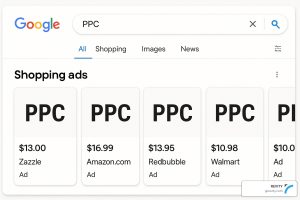SEO and CRO are two crucial elements of any successful digital marketing strategy. However, while the two go hand in hand, they’re completely different.
Search engine optimization (SEO) is the process of making changes to your website to rank higher in search results. In contrast, conversion rate optimization (CRO) involves making changes to your site in order to increase the percentage of visitors who complete a desired action (make a purchase, fill out a form, etc.).
SEO and CRO can be looked at as two sides of the same coin; they’re both essential in the online marketing process.
In this blog, we’ll help you understand all the differences between SEO and CRO and how they can work together to help you achieve your marketing goals. We’ll also teach you about one of the most important tools for search engine optimization.
What is SEO?
Search engine optimization, or SEO, is the practice of optimizing your website to rank higher in search engine results pages, or SERPs. The main goal is to make it easier for Google to see that the content you offer on your site is relevant to the people searching for related information.
SEO involves various techniques, including keyword research, on-page optimization, and off-page optimization.
One of the most important tools for search engine optimization is keyword research. Keyword research involves identifying words and phrases your target audience uses online when looking for products or services like yours. There are a few sites that can help you see how many people are using different words and phrases in their online searches and how hard it is for you to rank for that specific keyword.
Once you have identified effective keywords related to your business, you can start to incorporate them strategically throughout your website. This will help search engines understand what your site is about and increase the likelihood of your site appearing higher up in search results.
A big part of SEO is on-page optimization. Your site should be structured to make it easier for search engines to crawl your site and index its pages. Some key on-page optimization tactics include using descriptive and keyword-rich titles and meta descriptions, incorporating header tags to organize your content, and optimizing your images with descriptive alt tags.
Off-page optimization is also an important aspect of SEO; it involves building links and other signals from other websites back to your own. This helps improve your site’s authority.
One of the most important things to look at when performing SEO is the click-through rate (CTR). The CTR is the percentage of visitors who click through to your website or landing page from an ad or their search results.
What is a good click-through rate? Generally speaking, your click-through rate should ideally be above the average click-through rate for your industry. The average click-through rate varies from industry to industry and location to location, so a bit of research should point you to the ideal number.
Overall, SEO is a complex and ever-evolving field that requires a lot of technical expertise. As you implement SEO strategies and use tools for search engine optimization, you can increase your website’s visibility and boost your average click-through rate.
What is CRO?
Now that you know what SEO is, let’s talk about the other side of the coin, CRO. CRO, or conversion rate optimization, is the practice of optimizing your website to increase the percentage of visitors who complete a desired action. Actions could include filling out a form, signing up for email reminders, or making a purchase.
The goal of CRO is to make your site more effective at converting visitors into leads or customers. This is done by improving user experience and removing obstacles that may make it harder for them to take the desired action.
A/B testing will be your ideal method for improving your conversion rates. A/B testing involves testing two variations of the same page to see which one performs better.
Other tactics include looking at where visitors may drop off or leave a site and using heat maps.
Once you understand the behaviors of your target audience, you can improve the effectiveness of your site and drive more leads and sales for your business.
How SEO and CRO Can Work Together
Now that you understand the difference between CRO and SEO, you can probably see how they work together and are necessary to each other. While the two are distinct strategies with different goals, they both share the end goal of increasing the online success of your business. The two couldn’t work without each other.
If you had performed SEO, but your site wasn’t optimized, all that effort you put into your SEO efforts would go to waste. Reversely, if you put a lot of time and resources into CRO, but you hadn’t performed SEO, then your site wouldn’t be getting much traffic for your CRO efforts to really make a difference.
By ensuring SEO and CRO are happening, you’ll see a lot more success with your online marketing efforts. You shouldn’t focus on just one; the two together are instrumental to the success of your business.
Transform Your Business’s Online Presence with Revity
If you’re looking for ways to expand your business’s reach and presence but are unsure where to start, look no further than Revity.
At Revity, we specialize in helping businesses like yours succeed. Digital marketing has many moving parts and can be overwhelming to learn and implement, especially if you don’t have much experience. That’s why we’re here to help.
Whether you need help with SEO, CRO, or something else, we have the expertise to help your business thrive in the crowded digital landscape.
Don’t let digital marketing overwhelm you; Call us today at 801-890-5284 or contact us on our site, and let’s talk about how we can partner with you to help take your business to the next level.
































